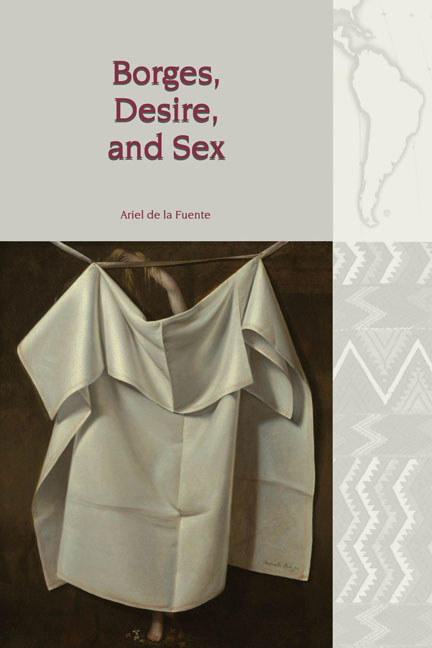Book contents
- Frontmatter
- Dedication
- Contents
- Acknowledgements
- List of Abbreviations
- Introduction
- 1 On Borges’s Sexuality
- 2 Biography in Literature and the Reading of Desire and Sex in Borges
- 3 Borges’s Erotic Library: The Poetry Shelf
- 4 Sir Richard Burton’s Orientalist Erotica: The Thousand Nights and a Night and The Perfumed Garden
- 5 Schopenhauer and Montaigne, Philosophy and Sex
- 6 Desire and Sex in Buenos Aires: Borges’s Poetry on the Arrabal
- 7 Stoicism and Borges’s Writing of Women
- 8 “Emma Zunz”: Sex, Virtue, and Punishment
- 9 “La intrusa”: Incest and Gay Readings
- Conclusions
- Works Cited
- Index
6 - Desire and Sex in Buenos Aires: Borges’s Poetry on the Arrabal
- Frontmatter
- Dedication
- Contents
- Acknowledgements
- List of Abbreviations
- Introduction
- 1 On Borges’s Sexuality
- 2 Biography in Literature and the Reading of Desire and Sex in Borges
- 3 Borges’s Erotic Library: The Poetry Shelf
- 4 Sir Richard Burton’s Orientalist Erotica: The Thousand Nights and a Night and The Perfumed Garden
- 5 Schopenhauer and Montaigne, Philosophy and Sex
- 6 Desire and Sex in Buenos Aires: Borges’s Poetry on the Arrabal
- 7 Stoicism and Borges’s Writing of Women
- 8 “Emma Zunz”: Sex, Virtue, and Punishment
- 9 “La intrusa”: Incest and Gay Readings
- Conclusions
- Works Cited
- Index
Summary
In the 1920s, Borges's main literary project was to write poetry on the arrabal or orillas, the working-class neighborhoods of low one-story houses, vacant lots, and dirt roads located on the edges of the city of Buenos Aires, a transitional area where the urban and the rural worlds intermingled. In the current critical consensus, Borges's orillas were the landscape of a nostalgic past, a reservoir of creole traditions in which the Porteños could see themselves to better understand the cosmopolitan changes that Buenos Aires was going through in the first decades of the twentieth century. Thus, Olea Franco pointed out that Borges's “voluntad es volver literariamente al mundo criollo de la ciudad decimonónica,” and Sarlo explained that “sin esa dimensión cultural, Buenos Aires moderna sería una ciudad sin raíces … la modernidad es —también— una relación con el pasado,” Because of its mythical nature, some critics have seen in Borges's arrabal “un espacio estético y simbólico [que] brinda experiencias espirituales” and considered its poetry as “una especie de fuga de la realidad.”
Although I find this consensus overall convincing, I still think that there are corners in Borges's poetry on the arrabal that have not been visited and I would like to argue that this (not always mythical) landscape was also a real “red-light” district that served as the backdrop against which he could speak about his own troubled sexuality. The reading of the poems proposed here will add, I hope, another layer of meaning to our understanding of Borges's poetry on the orillas and, thus, will also show another of the multiple locations of eroticism within his work.
Sex: Not in “El Paseo de Julio”
The intersection of sex and the city in Borges's works has been considered before, but its exploration has often revolved around the presence of the Paseo de Julio in his literature, which reflects, I think, a very partial and unconvincing reading of Borges's corpus. For Adriana Bergero, “El Paseo de Julio” (a poem on a notorious brothel district in a city notorious for prostitution in the 1920s) and the short story “Emma Zunz” (in which the female protagonist has paid sex on the infamous avenue) are the texts that allow her to propose that this area of downtown Buenos Aires was the urban space in which Borges lived his conflicted sexuality.
- Type
- Chapter
- Information
- Borges, Desire, and Sex , pp. 129 - 144Publisher: Liverpool University PressPrint publication year: 2018



